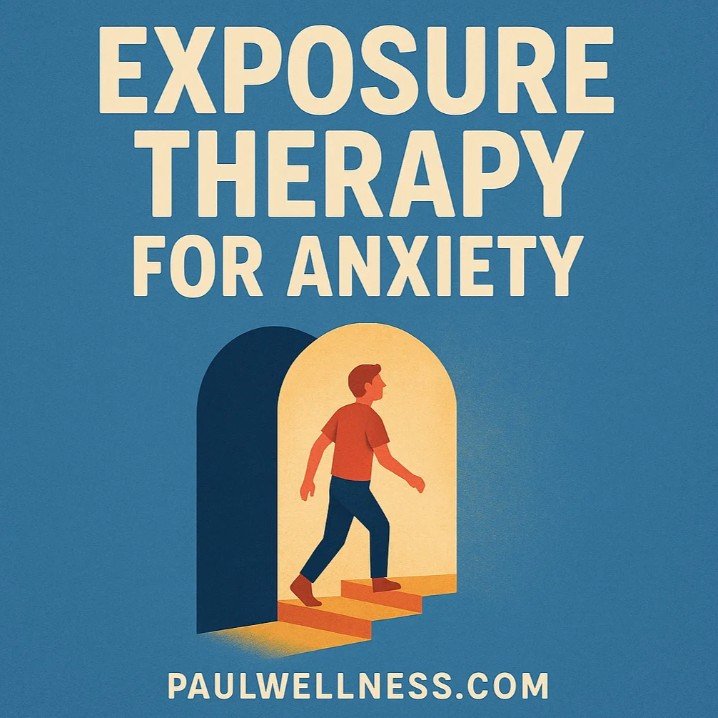Ever felt your stomach twist into knots at just the thought of stepping into a crowded room or facing that one thing that scares you most? That’s anxiety talking—but here’s a game-changer: exposure therapy for anxiety might just be your ticket to freedom.
Exposure therapy is one of those psychology basics you hear therapists talking about. It’s practical, evidence-based, and can truly turn your anxiety management game around. Let’s dive in.
What Exactly Is Exposure Therapy?
In plain talk, exposure therapy involves gradually facing the things that trigger your anxiety, instead of avoiding them. You might start by imagining the situation, then slowly move toward experiencing it in real life. It might seem counterintuitive at first—why on earth would I face something that scares me silly?—but trust me, there’s solid science behind it.
Quick Science Break (But Keep It Simple)
Exposure therapy works because it retrains your brain. Anxiety convinces your mind there’s danger everywhere. By facing your fears safely, your brain learns they’re actually manageable. That realization kicks off a chain reaction that gradually reduces your anxiety.
Signs You’re Ready for Exposure Therapy
Exposure therapy isn’t just diving headfirst into fear. There are clear signs you are recovering from anxiety that show you’re ready:
- You’re aware of your triggers.
- You’ve tried other anxiety management techniques, like mindfulness or stress management, but you’re ready for something more direct.
- You’re motivated—ready to invest emotionally and mentally into therapy.
Sound like you? Let’s keep going.
Types of Exposure Therapy
There’s more than one way to tackle anxiety head-on:
1. Gradual Exposure (Systematic Desensitization)
This is the “dip-your-toe-in-first” method. You face your anxiety triggers incrementally, moving from less scary to more intimidating scenarios.
Example: If social situations spike your anxiety, start by imagining conversations. Next step: practice small talk with trusted friends. Eventually, you’ll attend larger gatherings.
2. Flooding
Flooding tosses you straight into the deep end. It’s intense, but can speed up anxiety relief significantly.
Example: Afraid of dogs? You might spend time immediately in the presence of a friendly dog until your anxiety drops.
This one’s intense—not for everyone—but highly effective if you’re up for it.
3. Imaginal Exposure
When direct contact with anxiety triggers isn’t feasible, imaginal exposure steps in. It uses your imagination to vividly face fears.
Example: Dealing with traumatic memories or fear of flying. Your therapist guides you through vividly visualizing the situation safely.
How Effective Is Exposure Therapy Really?
Here’s the truth: Exposure therapy isn’t just a passing fad. It’s backed by research showing significant success, particularly for:
- Phobias
- Social anxiety disorder
- Post-Traumatic Stress Disorder (PTSD)
- Obsessive-Compulsive Disorder (OCD)
Bottom line? It’s genuinely transformative.
Tips to Make Exposure Therapy Work for You
Ready to give it a go? Here are practical tips to boost your success:
- Find a Therapist You Trust: Exposure therapy works best when you trust the professional guiding you.
- Set Realistic Goals: Progress is personal; there’s no “one-size-fits-all.”
- Commit to Regular Sessions: Consistency is key—your brain needs repetition.
- Use Coping Strategies: Combine exposure therapy with stress relief tactics like deep breathing, mindfulness, or even tools like Ono Roller Fidget Toy Review: The Ultimate Hand Roller for Stress Relief? to ground yourself.
A Quick Story to Illustrate
Let’s chat about my friend Sam (not his real name, of course). He had extreme social anxiety. Parties were a nightmare—just thinking about them made him break into a cold sweat. Sam started exposure therapy gradually. First, short coffee chats with friends. Then, larger gatherings. Eventually, Sam attended—and actually enjoyed—a wedding filled with strangers. Sam’s proof this stuff works.
FAQs About Exposure Therapy for Anxiety
Q: Is exposure therapy dangerous?
A: When supervised by a trained therapist, it’s completely safe. You’re always in control.
Q: How quickly will I see results?
A: Everyone’s different, but many people notice changes after just a few sessions.
Q: Can exposure therapy completely cure anxiety?
A: For many, it significantly reduces symptoms, and for some, anxiety disappears entirely.
Other Interesting Articles
- Ono Roller Fidget Toy Review: The Ultimate Hand Roller for Stress Relief?
- How to Cope with Political Stress Without Losing Your Mind
- Political Stress: How to Stay Sane When the World Feels Like It’s on Fire
- Political Stress Quiz: How Stressed Are You?
- Top 3 Emotional Regulation Books for Kids: Helping Children Navigate Big Feelings
- PaulWellness Free Therapy Worksheets
Wrapping It Up (With Hope)
Exposure therapy for anxiety isn’t easy—but it’s worth it. As you gradually face your fears, you’ll find freedom, confidence, and clarity you didn’t think were possible. Remember, anxiety is common, but it doesn’t have to control you.
So, ready to start your journey toward anxiety management that actually works?
You’ve got this.
Author:
Paul Wellness is an expert in exposure therapy and anxiety management, offering real-world strategies for overcoming stress and anxiety.


